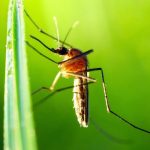
If you’ve noticed an increase in insects in your home in the fall, it’s not your imagination and it’s not just you. It’s the result of pests trying to get out of the increasingly cold weather in Illinois. Some pests migrate to warmer climates, some burrow in or under debris while others just try to get into our homes to warm up. The scientific term for this phenomenon is overwintering.
The form of overwintering that most directly affects you is when fall pests enter your home. There are several types of pests known for their tendency to head indoors when temperatures fall. Some of the most difficult overwintering pests to get rid of are the ones you can’t see because they’re in the attic or behind your walls. Some of the pests most likely to end up there include: Asian lady beetles, rodents, termites, stink bugs and wasps. Learn more about why these fall pests come inside, and how to keep them out.
Fall Pests to Watch Out For
Asian Lady Beetles
While Asian lady beetles resemble ladybugs, they’re a bit larger. Also, their coloration ranges from red to orange and not all of them have spots. So, what’s the problem with these small ladybug look-alikes? They stick together in groups, using pheromones to communicate their location. Hundreds and even thousands of these beetles have been found in and on homes. When they want to enter your home to get out of the cold, the result can be a large infestation in your attic, wall voids, on siding, and inside closets. While they won’t eat your home or sting you, if you have an infestation, their waste can leave behind excrement which can stain surfaces where they land, as well as trigger an allergic reaction, asthma, and other respiratory issues in sensitive individuals. The best way to prevent these, or any, bugs from getting into your home is to seal cracks and crevices on the exterior of your home.
Rodents
You probably know that squirrels are excellent climbers but so is the common house mouse. These rodents can squeeze through a hole as small as 1/4 inch and can quickly climb straight up an eight-foot wall in less than half a minute. From there, it’s easy to get into your attic and make a nest. If you hear scratching or gnawing noises from up above or inside the walls, you likely have a rodent inside your attic or wall voids. It’s time to call an experienced rodent exterminator like Terminix Anderson.
Stink bugs
While there are several types of stink bugs, the brown marmorated stink bug is the one you’re most likely to see in your home, shaped like a shield with a mottled combination of brown and gray ranging in size from ¼” to ⅜”. It’s an invasive species found throughout the United States and, as their name suggests, when stink bugs feel threatened or get squashed, they release an unpleasant odor. Stink bugs tend to spend the winter in quiet parts of a home where they’re unlikely to be disturbed like cracks under or behind baseboards, around window and door trim, and around exhaust fans or lights in ceilings.
Termites
Termites are considered to be the most destructive pest in America. The estimated annual cost of termite damage in the US is up to $30 billion! Termites, if you have them, are always trying to enter your house. So, what’s different about fall and winter? First, subterranean termites, the most destructive species, tend to burrow deeper into the ground to stay warm in the winter, when most of us spend less time outside. This combination means you’re less likely to discover a subterranean termite infestation until the spring. During that time termites can do a great deal of damage. Once termites can get into your home they will consume wood and anything else that contains cellulose. Signs of termites in your home include: blisters on painted wood, hollow-sounding wood and unexplained pinhole-sized holes.
Wasps
Wasp colonies as a whole don’t overwinter; the regular workers die each winter. However, fertilized queens do overwinter, either outdoors in hollow logs, stumps or under leaves or in structures. Because nests can be built directly on a home, wasps like the paper wasp have been known to make their way indoors through holes in attic vent screens or underneath shingles. So ensure that your attic is as sealed as possible to prevent wasps from entering and starting a new nest in the spring.
Experienced Local Exterminators
Terminix Anderson has been providing Illinois and Indiana with quality pest control services since 1913. If you have any of these pests in your home, Terminix Anderson can help get them out and keep them there. Call us for a free quote!





